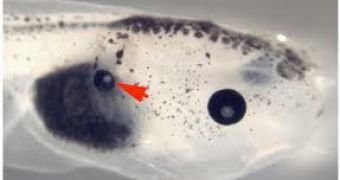Experiments carried out on tadpoles suggest that, as peculiar as this may sound, the brain is able to pick up visual cues sent from rather abnormal locations.
In order to reach these conclusions, the researchers took to grafting eyes on the Tails of 134 tadpoles of an African frog known to scientists as the Xenopus laevis.
Despite the fact that their attaching these eyeballs to said part of the tadpoles' body was a rather difficult task, the eyes eventually managed to grow accustomed to their new surroundings and even proved functional.
Thus, once this new set of eyeballs was in place, the researchers working on this project surgically removed the proper ones, and carried out several experiments which they hoped would help them figure out whether or not the animals' brain was able to pick up visual signals sent to it from this unusual location.
More precisely, they placed the tadpoles in an arena whose halves were illuminated by either red or blue light, respectively. Live Science reports that, whenever a tadpole wondered into the red light area, the researchers shocked it with a tiny electric zap.
Six of the tadpoles used in these experiments eventually learned that it would be best to keep out of the red-lit area, and remained in the blue one.
Commenting on the results of these experiments, Michael Levin, a biologist currently working at Tufts University, stated as follows:
“The brain is not wired to find an eye on the tail, since it's never happened before and thus is not something the brain has evolved specifically to deal with, and yet it can recognize this patch of tissue as providing valuable visual information.”
“These findings suggest that the brain has remarkable plasticity and may actually take a survey of its body configuration to make use of different body arrangements,” he went on to argue.
It is Michal Levin's and his colleagues' belief that their findings will at one point help improve on the techniques now used in regenerative medicine and other similar fields.
“This has implications not only for regenerative medicine — replacing damaged sensory and motor organs — but also for augmentation technology. Perhaps you'd like some more eyes, maybe ones that see in infrared?” Michael Levin jokingly said.

 14 DAY TRIAL //
14 DAY TRIAL //